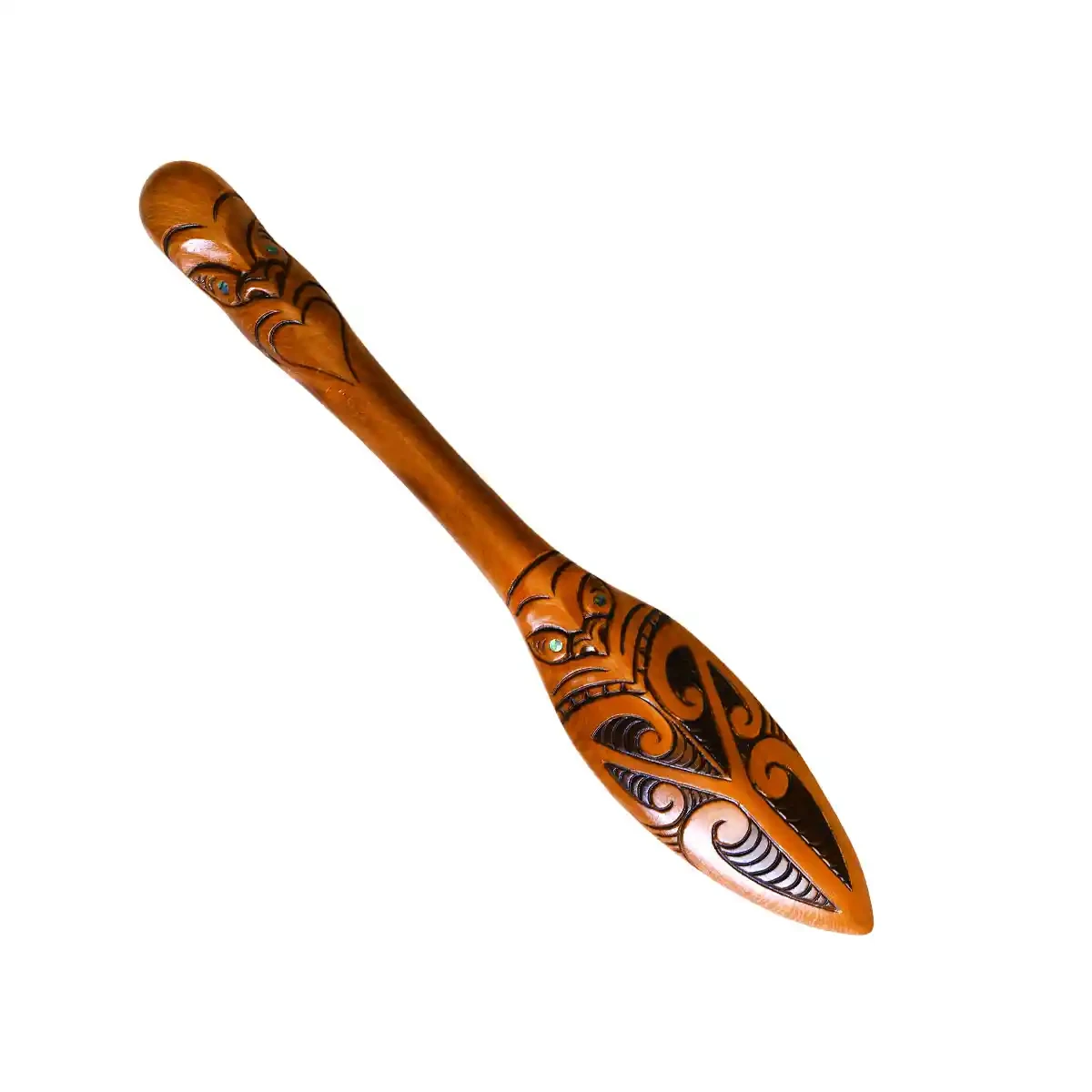Description:
Small wooden paddle with koru design
Tiki Design offers beautiful authentic Māori art. Māori design wood carvings, sculptures and artworks from swamp kauri and re-cycled New Zealand woods. Authentic Māori art from Aotearoa - New Zealand. Hand carved in our beautiful Aotearoa - New Zealand.Waka hoe (Māori canoe paddles)
These paddles make a lovely Māori gift. The paddle comes with a small hook at the back, so you can hang it on the wall straight away.Description small wooden paddle: Manaia, spiritual guardian on top with Tangaroa (God of the oceans & fish) biting onto blade. Blade covered in Koru, uncurling fern frond design & Unaunahi fish scale pattern. Paua shell eyes.
Type of wood: 30,000 year old swamp kauri or other NZ native timbers.
-
Size: small: 460mm x 80mm (18.11" x 3.15")
Or check out our artist's medium
Māori wooden paddle >>
The
medium paddle is also quite popular as a 21st birthday gift.
Paddles
Paddling was the most common method of propelling canoes. The paddle was known as the hoe (waka hoe), or hīrau. Longer paddles were known as hoe whakatere, hoe whakahaere or urungi.They were usually made of kahikatea wood, although mataī could also be suitably light and strong. Tuta Nihoniho, of the Ngāti Porou tribe, noted that paddles could also be made of mānuka, maire, the heart of pukatea, and tawa.
The steering oars were straight, but on properly formed paddles the blade was set at a slight angle. The side of the blade used for pushing against the water was flat, while the other was rounded. The handle was straight, though in the Waikato district curved handles were used.
Generally paddles were unadorned, but occasionally they were painted with scrolled kōwhaiwhai patterns. Paddles for purely ceremonial uses were usually carved.
On coastal trips one man would usually steer. However, on voyages in the open ocean there could be up to four – two at the stern, and two near the bow.
Source: Hoturoa Barclay-Kerr,
'Waka – canoes - Waka equipment'
Te Ara - the Encyclopedia of New Zealand



